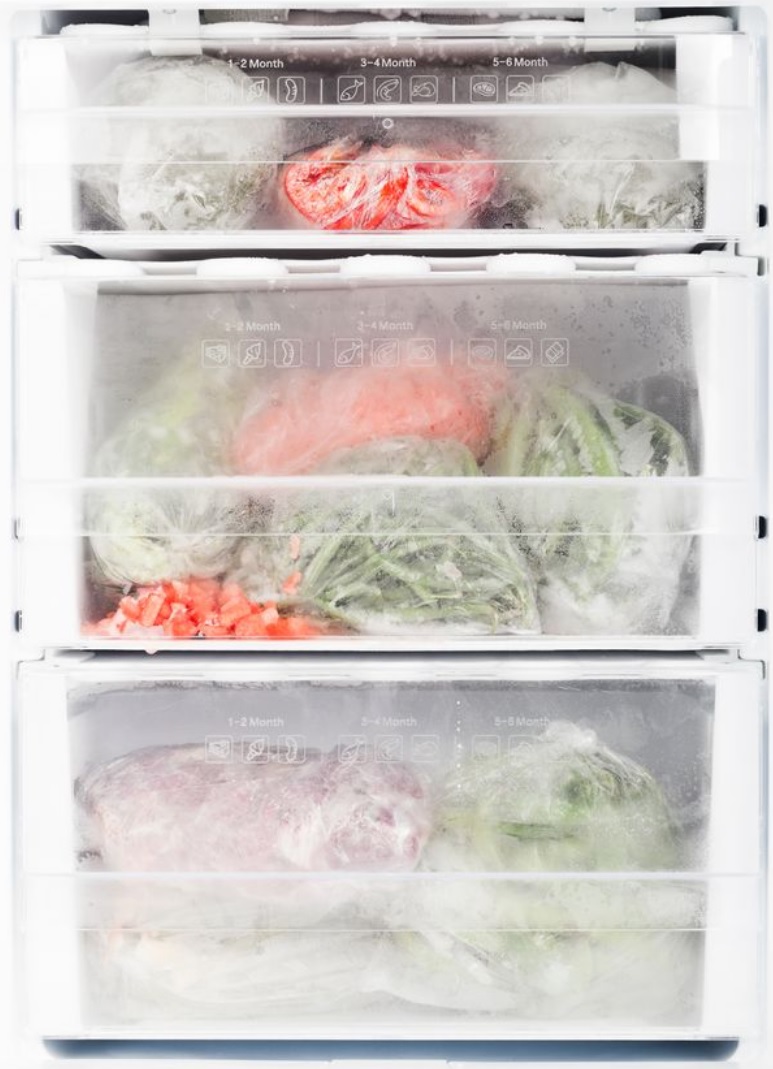ADVERTISEMENT
How to Properly Freeze Vegetables and Fruits at Home (And Not Over-Shop)
Freezing fruits and vegetables is one of the best ways to preserve the harvest, reduce food waste, and save money. However, knowing how to properly freeze produce at home is key to ensuring they maintain their taste, texture, and nutritional value. Plus, by understanding the basics of freezing and learning how to avoid over-shopping, you’ll end up with the right amount of frozen food for future meals, minimizing waste and excess.
If you’ve ever found yourself buying more produce than you can eat, only to have it go bad before you use it, you know how frustrating it can be. Freezing the extra fruits and vegetables can help avoid that problem while also allowing you to enjoy seasonal produce year-round.
Let’s explore how to properly freeze fruits and vegetables at home, along with some tips for smart shopping to ensure you don’t overstock your freezer.
🥦 1. Choose Fresh, Ripe Produce
The first step in freezing fruits and vegetables is choosing the right produce. For the best results, you’ll want to freeze items that are fresh and ripe. Overripe or under-ripe fruits and vegetables might not hold up well in the freezer.
What to Look For:
- Firm, ripe fruits and vegetables (not too soft or mushy).
- Avoid items that are damaged or bruised. These can spoil quickly in the freezer.
- In-season produce often freezes better, so try to freeze when the harvest is plentiful and prices are lower.
🌽 2. Blanching: The Key to Preserving Texture and Nutrients
Blanching is a crucial step in freezing many vegetables. It helps to preserve their color, flavor, and nutritional value by stopping the enzyme action that causes spoilage. Not all vegetables need blanching, but it’s recommended for most.
How to Blanch:
- Boil water: Bring a large pot of water to a rolling boil.
- Prepare ice bath: Fill a large bowl with ice and cold water.
- Blanch the vegetables: Place the vegetables in the boiling water for a short period (usually 2–5 minutes, depending on the vegetable). For example:
- Broccoli: 2-3 minutes
- Carrots: 2-3 minutes
- Spinach: 2 minutes
- Ice bath: Immediately transfer the vegetables into the ice bath to stop the cooking process.
- Drain and dry: Once cooled, drain the vegetables well and pat them dry with a towel to remove excess moisture.
Blanching inactivates enzymes that could cause the vegetables to deteriorate in the freezer. Skip this step for fruits, as they don’t need blanching to freeze well.
🍓 3. Flash Freezing: The Secret to Preventing Clumping
For many fruits and vegetables, flash freezing is a must if you want to store them without clumping together into one big frozen mass. This technique keeps items separate, making it easier to grab just what you need when you’re ready to cook or eat.
How to Flash Freeze:
- After blanching (if necessary) and drying the vegetables, spread them out in a single layer on a baking sheet.
- Place the sheet in the freezer for 1-2 hours, or until the items are firm to the touch.
- Once they’re frozen, transfer the items into freezer bags or containers for long-term storage.
By flash freezing, you ensure that each item remains individually frozen, which is perfect for when you need a handful of peas or berries, rather than thawing an entire bag.
🍇 4. Proper Packaging: Preventing Freezer Burn
The right packaging is essential for long-term freezer storage. It helps preserve flavor, texture, and prevents freezer burn. You’ll want to use materials that provide an airtight seal.
Packaging Tips:
- Freezer bags are a great option, especially if you can remove as much air as possible. Consider using a vacuum sealer to keep air out.
- Freezer-safe containers are also effective, but be sure to leave some space at the top for expansion.
- For fruits that might release moisture (like berries or peaches), place them in plastic containers that can hold the liquid without making a mess.
Be sure to label each package with the date and contents, so you know when it’s time to use them.
🍎 5. Freezing Fruits: Special Considerations
Fruits are relatively easy to freeze, but there are some special considerations depending on the type:
High-Water Fruits (like watermelon, peaches, and grapes):
These fruits freeze well, but they might lose some of their texture once thawed, so it’s best to use them for smoothies, baking, or cooking rather than eating raw after thawing.
Acidic Fruits (like apples, oranges, and berries):
These fruits can be frozen either as-is or dipped in a solution of ascorbic acid (vitamin C) or sugar syrup to prevent browning. Lemon juice can also help with color preservation.
For Complete Cooking STEPS Please Head On Over To Next Page Or Open button (>) and don’t forget to SHARE with your Facebook friends
